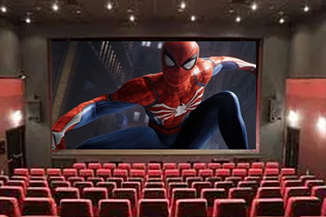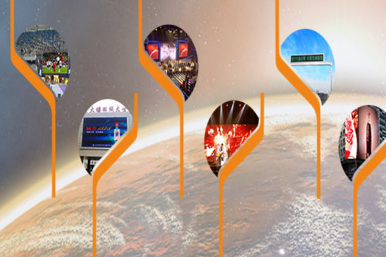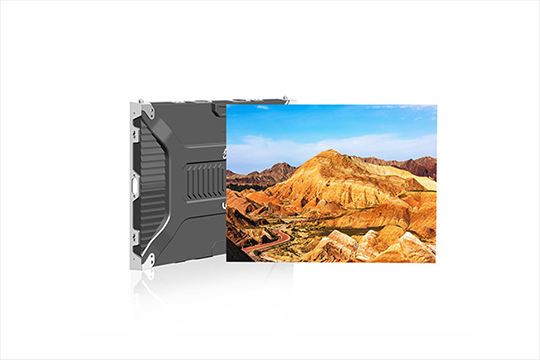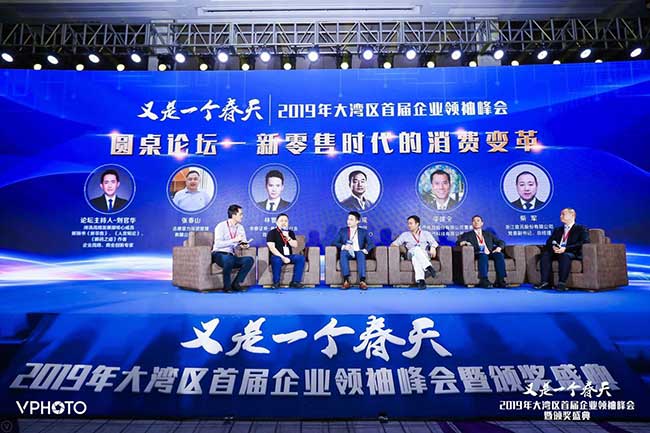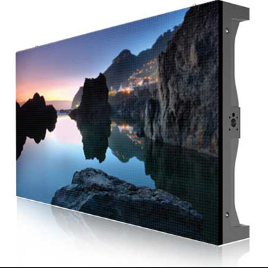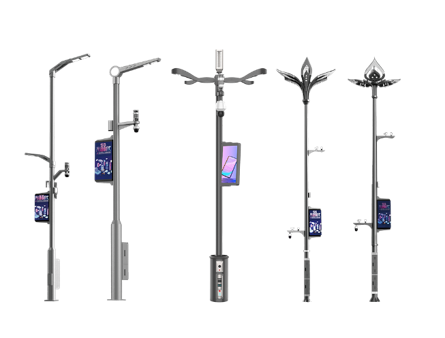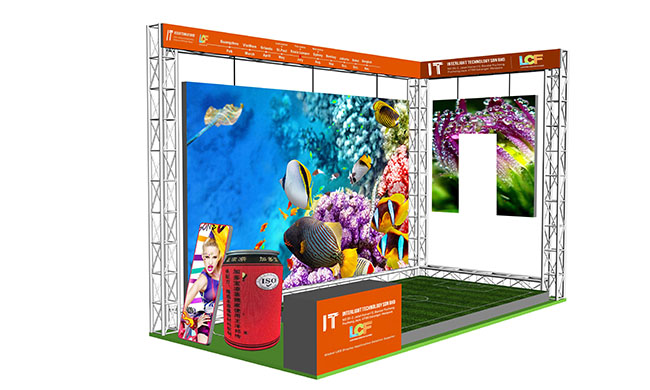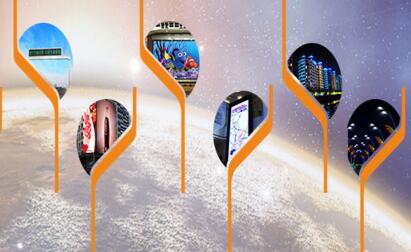Publisher: Supplier of LED Display Time: 2022-08-11 10:03 Views: 1009
Since 2022, the market growth of mini/micro LED direct display products seems to be slowing down. This is in contrast to the industry's previous prediction that a new generation of technology promotes another round of accelerated growth of LED direct display large screens. Is this change long-term? What's the logic behind it?
Three reasons make Mini/Micro LED directly show that enterprises are "temporarily unsatisfactory"
"Whether it is 20% or 30%! The growth rate of mini/micro LED direct display products is not as good as expected, and it is not as good as the increase of more than 50% in the few years when small-pitch LEDs first became popular. However, even so, this is still very high. Growth rate." Industry insiders pointed out that some people think that the growth of mini/micro LED direct display products is not good because "expectations are too high". In addition, there are several reasons that affect the marketization process of mini/micro LED direct display products in 2022:
First, the direct display of mini/micro LED is still "higher price". Even, the new specification products of p0.7 and p0.4 level are "no highest, only higher" price. This significantly limits the market development of such products. In contrast, at the level above P1.0, the price of traditional small-pitch LED large screens shows a continuous downward trend. In 2022, under the background that the supply shortage of upstream IC, LED crystal and other components will be eased, the total industry demand will be at a small platform, and the industry's future supply forecast will increase significantly, and the market price competition will be more intense. However, the mini/micro LED directly shows that the layout has just begun in the product spacing above P1.0, and it has not shown enough competitive advantages. ——The expected unique market is not fast, and the mature market has competition from mature products. The development of mini/micro LED direct display still needs to "make a breakthrough".

Second, in recent years, whether it is mini/micro LED direct display, new products representing the cutting-edge of the industry, or conventional small-pitch LED display products, more competitors have ushered in. There are overseas giants such as Samsung and Sony, as well as household appliances and IT brands such as Hisense, Skyworth, Lenovo, Konka, etc., and more second- and third-tier brands in the LED display large-screen industry have broken through the technical bottleneck of "P1. The "increase in the circle" that comes - there are more players, and naturally there will be the problem of "more monks and less flesh". The performance in the market is that the growth rate felt by the leading companies is less than expected.
Third, since 2022, both domestic and overseas markets have encountered a new round of "demand fluctuations". Including the further impact of the new crown epidemic, especially market changes in cultural tourism, entertainment, shopping needs, etc. As well as the changes in market sentiment in Europe and the United States under the conflict between Russia and Ukraine, changes in consumption trends caused by global inflation expectations, especially the impact of QE policies and interest rate hikes on global consumer demand since Europe and the United States quickly withdrawn from the new crown, all are not conducive to high-value new products. Technological products, such as mini/micro LED direct displays, factors that accelerate the rollout - of course, the market also has a friendly side: for example, the price of primary products such as energy, minerals and agricultural products has risen, correspondingly to economies that rely on the export of these resources It is a huge positive, which has promoted the upgrading of consumption in markets including the Middle East.
"There are both its own structural factors, competitive variables, and the impact of the macroeconomic situation." Industry experts said that these factors will change the "short-term market" development pattern of mini/micro LED direct display technology. Product growth has an "impact".
Mini/Micro LED direct display is an absolute trend judgment
However, the market growth rate was lower than expected, but it did not delay the upstream and downstream investment of the mini/micro LED direct display industry. Because the industry still believes that the advantages of mini/micro LED technology are enough to make it the "only technology" for "small-pitch, micro-pitch LED" display in the future.
On the one hand, in the micro-pitch LED display, micro LED is a necessary technology. In 2022, the micro-pitch display shows that the popularity of P0.9 is accelerating, and it is gradually evolving to a dominant specification in application scenarios such as dispatching command centers; at the same time, leading companies in the industry have promoted P0.7 as the next-generation standard specification. It is more eclectic in terms of technical difficulty and cost, and can provide basic performance support for 100+ inch displays, which is considered to be the standard to be popularized first; at the same time, leading companies such as Samsung, Leyard, Lehman, etc. Promote P0.4X to become the next-generation standard, and enter the 100+ inch 8K display ultra-high-definition market.
In this regard, Leyard revealed that its ultra-fine pitch layout includes multiple specifications such as 0.4mm, 0.6mm, 0.7mm, 0.9mm, etc., to meet the scene needs of different display clarity and size levels. Since 2022, with yield improvement and economies of scale, product costs have been reduced from multiple process perspectives. For example, under the higher reliability of mass transfer, the repair rate of the back end of the product decreases, which directly brings about the improvement of manufacturing efficiency and the reduction of cost. At the same time, the price reduction of upstream Micro LED chips and ICs has also led to a decrease in the cost of corresponding products.
On the other hand, the industry believes that mini/micro LED technology will systematically replace the chip requirements for "all" small-pitch LED displays between "P2.5 to P1.0 pitch" in the future. At present, companies in the industry have launched direct display products with mini/micro LED crystal specifications on P2.0 and below pitch products.
From a technical point of view, the shrinking of the crystal size, of course, brings "the possibility of smaller pixel size", but it also greatly reduces the ultimate brightness performance of the final product. However, on the P2.5 specification and its smaller pitch products, it is often mainly used for indoor applications, and its demand for average brightness and extreme brightness is much lower than that of outdoor screens. Coupled with the continuous improvement of LED luminous efficiency and the improvement of light emitting efficiency by COB and other packaging technologies, small-pitch LED applications are increasingly suitable for mini/micro LED products. It is predicted in the industry that micro LEDs with horizontal and vertical dimensions of less than 50 microns can finally meet the display brightness requirements of P1.8 and below. The mini LED may be enough to meet the brightness requirements of future P2.0 to P4.0 products and indoor applications.
What are the benefits of using mini/micro LED technology for larger pitch products? Nationstar pointed out that this means that a unit of silicon and upstream production lines can produce "a greater number of pixel LED crystals" per unit of time. For example, a single 4-inch wafer can produce about 350K 0408 (4mil*8mil) chips. When the chip area size is reduced to 0204 (2mil*4mil), about 1400K chips can be produced under the same wafer area. , which reduces the cost of a single chip by more than 60%. Therefore, this has prompted a group of upstream and midstream companies to launch lamp bead devices that use mini/micro LEDs and are suitable for larger pitch indicators.
At present, the direct display products of P1.0 or higher pitch LEDs using mini/micro LED technology are priced at the same price as traditional high-end LED products with small pitches. However, industry insiders believe that in the long run, mini/micro LED technology will have a cost advantage over traditional mid-to-high-end small-pitch LEDs within a certain interval index above P1.0.
From a certain point of view, after the market growth of mini/micro LED has slowed down since 2022, it is the expansion of the application scope of mini/micro LED: the in-depth expansion from P0.4 to P2.0 makes its future market ruler image "Apparently".
A new era in which multiple technological explorations go hand in hand
What is the biggest technical difficulty for LED direct display products using mini/micro LED specifications? The answer is mass transfers. From 2021 to 2022, the industry will have a nearly one order of magnitude decrease in defect rate in the mass transfer technology of mini/micro LED direct display. However, such efficiency is not enough for a P0.4 8K display.
However, the industry is also using some other methods to achieve breakthroughs in the product market: for example, the all-in-one lamp bead technology proposed and practiced by Nationstar was widely welcomed; for another example, the layout of MIP (Micro LED in Package) technology has become The consensus of upstream and midstream companies in the industry in 2022. At the same time, in terms of finished products, the industry is also trying technologies including AM glass TFT substrates, colorization solutions relying on color filters or conversion films, etc., to reduce the dependence of the final product on the front-end mass transfer process.
From a certain point of view, the charm of mini/micro LED direct display technology lies in "the huge application range and potential, the product technology is far from being finalized". This allows more manufacturers and enterprises to see opportunities. The industry believes that the growth of mini/micro LED direct display is still in the absolute early stage of the market. The decline in the growth rate in 2022 is not a great thing - what's more, even if the current growth rate is still high, and the absolute growth rate is still above the peak value - industry companies are confident that under the theme of technological innovation, "Master the mini/ micro LED” can control the future destiny.
